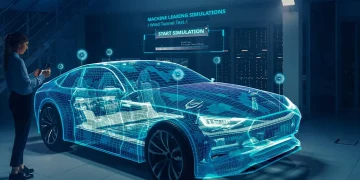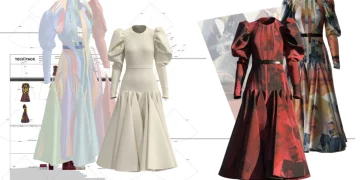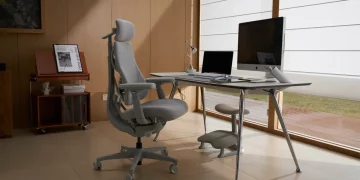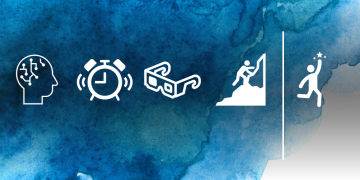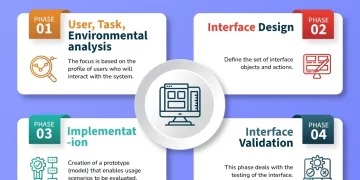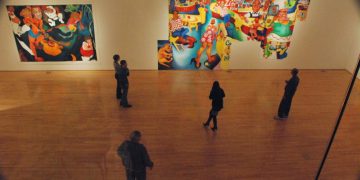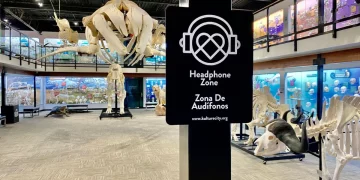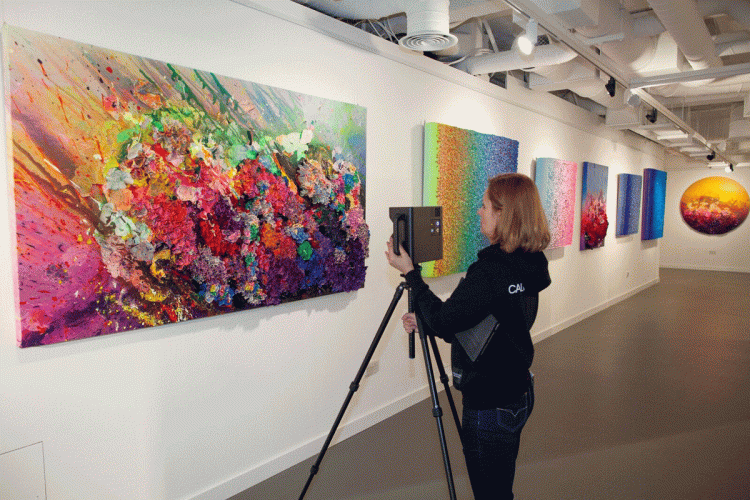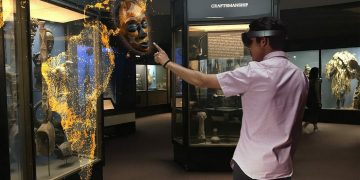Introduction
The world of exhibition design has long been at the intersection of creativity, technology, and communication. As industries evolve, so too must the ways in which they engage with audiences, and exhibitions are no exception. In recent years, Virtual Reality (VR) has emerged as a transformative force in the world of design, offering exciting new possibilities for immersive and interactive experiences. But is VR truly the next frontier in exhibition design, or is it just another passing trend?
This article explores the role of Virtual Reality in exhibition design, its potential to redefine how we engage with art, history, and culture, and the challenges and opportunities it presents to designers, curators, and institutions.
A Brief Overview of Exhibition Design
Exhibition design refers to the process of creating spaces that communicate ideas, stories, and experiences to an audience. From museum displays to trade show booths, exhibition design involves everything from the arrangement of physical objects to the use of lighting, sound, and interactive media. The primary goal is to foster engagement, provoke thought, and create memorable experiences that resonate with visitors.
Over the years, exhibition design has evolved in response to changes in technology, social behavior, and audience expectations. From the early days of static displays to the rise of interactive exhibits, designers have continually sought ways to enhance the visitor experience through innovative approaches. Today, we find ourselves at a new threshold: the integration of Virtual Reality.
What is Virtual Reality?

Virtual Reality is a computer-generated simulation of a 3D environment that users can interact with in a seemingly real way, often through the use of specialized equipment such as VR headsets and motion tracking devices. Unlike traditional digital media, VR immerses users in environments that feel tangible and real, allowing them to explore and interact with virtual spaces as if they were physical places.
In recent years, VR has evolved from a niche technology into a mainstream tool used in entertainment, education, and even business. Its ability to create immersive, interactive experiences makes it particularly attractive for use in exhibitions, where engaging and captivating audiences is essential.
The Evolution of Technology in Exhibitions
Historically, exhibition design has relied on traditional tools: objects, displays, signage, and the occasional use of multimedia (videos, audio guides, etc.). But as the digital revolution took hold, designers began experimenting with new ways to incorporate technology into exhibitions. Early attempts included interactive touchscreens, projection mapping, and video walls, all of which added new layers of engagement.
However, while these technologies enhanced the visitor experience, they often remained passive. Visitors interacted with the technology, but they didn’t truly “enter” the experience. This is where Virtual Reality begins to change the game. Instead of merely observing a display, VR allows visitors to fully immerse themselves in a world of the designer’s creation, breaking the boundaries between the physical space and the virtual world.
Why is VR the Next Step?
- Immersive Experience One of the most compelling reasons for VR’s rise in exhibition design is its ability to create an immersive environment. In a VR exhibition, visitors are no longer mere observers. They become active participants, able to navigate the space, interact with objects, and even influence the course of events within the exhibition. This deep level of immersion leads to heightened emotional engagement and a more memorable experience.
- Endless Possibilities for Creativity With VR, the constraints of physical space are eliminated. Designers are no longer bound by the limitations of floor plans, walls, or the cost of transporting large objects. Entirely fantastical environments can be created—whether it’s an ancient civilization brought to life, a futuristic city, or a digital reinterpretation of a famous painting. The freedom to explore space, time, and imagination means that exhibition design can evolve into something entirely new.
- Interactive Learning Museums and educational exhibitions have long used hands-on exhibits and educational tools to engage visitors. However, VR takes this interactivity to the next level. Through VR simulations, visitors can not only see but experience history, science, and culture in ways that were previously impossible. Imagine standing on the surface of Mars or participating in a historical event—experiences that would be impractical or impossible in the real world are now within reach.
- Accessibility and Inclusivity VR has the potential to make exhibitions more accessible to a global audience. With the right technology, people from all over the world can participate in virtual exhibitions, even if they cannot physically visit a museum or gallery. Moreover, VR can accommodate individuals with disabilities by providing customizable experiences tailored to their needs, ensuring that everyone can enjoy and learn from the exhibition.
- Enhanced Storytelling Storytelling is at the heart of any exhibition, and VR allows for a more dynamic approach to narrative. Instead of following a linear path dictated by text panels or static displays, visitors can explore stories at their own pace, uncovering layers of information and experiencing events from different perspectives. VR gives designers the power to control the flow of information while still offering the visitor autonomy in how they interact with the content.
Case Studies: VR in Action
To better understand the impact of VR on exhibition design, let’s take a look at a few notable examples of VR being integrated into museum and gallery experiences.
1. The Smithsonian Institution: “The 1968 Exhibit”
In 2018, the Smithsonian Institution in Washington, D.C. incorporated VR technology into its exhibit about the tumultuous year of 1968. Through VR, visitors could experience pivotal moments in history, such as the Apollo 8 mission, the Democratic National Convention protests, and the assassination of Martin Luther King Jr. The immersive experience allowed visitors to feel the emotional weight of these events in a way that traditional displays could not.
2. The British Museum: “The Tomb of the Boy King”
The British Museum’s “Tomb of the Boy King” exhibit, which explored the life of Tutankhamun, used VR to transport visitors to the ancient Egyptian tomb. Using a VR headset, users could enter the tomb and explore its hidden treasures, all while hearing insights from experts about the historical significance of the artifacts. This immersive experience helped visitors understand the ancient world on a much deeper level than would have been possible through photographs or text alone.
3. Art Galleries: “Virtual Gallery Tours”
Many art galleries around the world have also adopted VR for virtual gallery tours. For example, the Van Gogh Museum in Amsterdam allows users to explore the museum’s collection remotely through VR. These virtual tours allow users to view artworks in high detail, and in some cases, the experience is enhanced by providing insights into the techniques and history behind each painting.
4. NASA’s “Journey to Mars” Exhibition

NASA’s “Journey to Mars” exhibition uses VR to simulate the experience of being on the surface of Mars. Visitors can put on VR headsets and take a virtual journey through the red planet’s landscape, exploring its features and imagining what it would be like to live and work there. This type of immersive experience helps bridge the gap between science fiction and reality, providing a new dimension to space exploration exhibitions.
The Challenges of Integrating VR into Exhibitions
While VR offers a wealth of opportunities for exhibition designers, there are also several challenges to consider.
- Cost and Infrastructure High-quality VR hardware can be expensive, and creating a fully immersive VR exhibition requires significant investment in both equipment and software. Additionally, ensuring that the technology works seamlessly in a busy, high-traffic exhibition space can be a logistical challenge. Designers must balance the benefits of VR with the practical realities of funding and space.
- Technical Skills and Expertise Developing VR content requires specialized knowledge and expertise, from 3D modeling to programming interactive elements. This means that exhibition designers must either hire or collaborate with professionals in the field of VR development, which can increase the complexity of the design process.
- Visitor Comfort and Accessibility While VR can be incredibly engaging, it can also be physically demanding. Some visitors may experience motion sickness or discomfort while using VR headsets, especially during long sessions. Ensuring that the experience is comfortable and accessible for all visitors is essential for its success. Moreover, VR content must be designed with accessibility in mind, considering factors such as visual impairment or hearing loss.
The Future of VR in Exhibition Design
Looking forward, VR has the potential to revolutionize the field of exhibition design. As technology continues to evolve, VR will likely become more affordable, more immersive, and easier to integrate into exhibitions. With advancements in AI, augmented reality (AR), and haptic feedback, future exhibitions may offer even more interactive and realistic experiences.
Moreover, as the global trend toward virtual and hybrid events continues, VR will play an increasingly important role in making exhibitions more accessible and engaging to a global audience. The boundary between physical and digital spaces will continue to blur, and designers will have to adapt to this new landscape.
Conclusion
Virtual Reality represents a major leap forward for exhibition design, offering unprecedented opportunities for immersion, creativity, and engagement. While there are challenges to overcome, the potential for VR to transform the way we experience exhibitions is undeniable. Whether it’s a museum exhibit, an art gallery, or a trade show booth, VR has the power to create experiences that are not only memorable but also meaningful. As technology advances, we can only imagine what the future holds for this exciting intersection of art, technology, and design.














